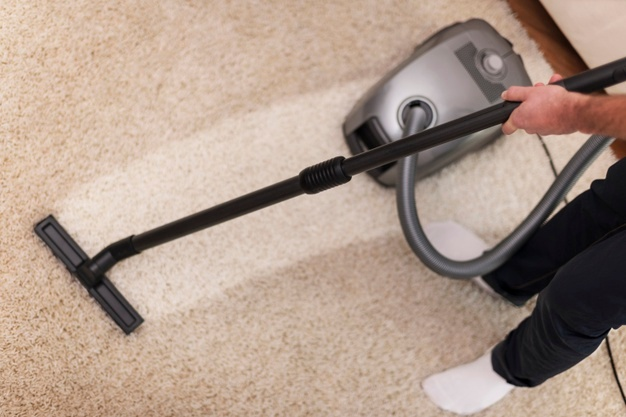
Stains are an inevitable part of daily life, whether it’s a splash of wine on a favourite rug, a spill of coffee on a pristine sofa, or muddy footprints on a carpet. While they can be frustrating, understanding the science behind effective stain removal can transform the task from daunting to manageable. This exploration into the chemistry and techniques of stain removal reveals the secrets to keeping your fabrics and surfaces spotless.
The Chemistry of Stains
Stains are essentially substances that have come into contact with a surface and adhered to it, often penetrating the fibres and becoming chemically bonded. The composition of the stain and the material it affects are crucial in determining the appropriate cleaning method. Stains can be categorised into several types, including:
Water-Soluble Stains
These include beverages like coffee, tea, and wine, as well as food items. They dissolve in water, making them generally easier to remove with water-based solutions.
Oil-Based Stains
These come from substances like cooking oil, grease, and cosmetics. They do not dissolve in water, and they often require solvents or detergents to break them down.
Protein-Based Stains
Blood, dairy products, and bodily fluids fall into this category. Enzymatic cleaners are particularly effective as they break down the protein molecules.
Tannin Stains
These are caused by natural compounds found in plants, such as those in red wine, coffee, and certain fruits. Acidic solutions often help in removing tannin stains.
Dye Stains
Inks and colourants that penetrate fibres deeply. These can be particularly stubborn and may require specialised stain removers.
Mechanisms of Stain Removal
Effective stain removal relies on various mechanisms, including dissolution, emulsification, suspension, and chemical reactions.
Dissolution
Water-soluble stains dissolve in water, allowing them to be rinsed away. Solvents such as alcohol or specialized degreasers can dissolve oil-based stains.
Emulsification
Detergents and soaps work by emulsifying oils and greases, breaking them into smaller droplets that can be washed away with water.
Suspension
Particulate stains like dirt are lifted from the fabric and held in suspension within the cleaning solution, preventing re-deposition.
Chemical Reaction
Some stains require a chemical reaction to break them down. For example, hydrogen peroxide can oxidise organic stains, bleaching them away, while enzymes break down proteins into smaller, more manageable pieces.

Techniques for Effective Stain Removal
Pre-treatment
Pre-treating a stain can make a significant difference. Before washing, apply a suitable stain remover or a mixture of water and detergent to the affected area to help loosen the stain.
Blotting, Not Rubbing
Rubbing a stain can cause it to spread and penetrate deeper into the fibers. Blotting with a clean cloth or paper towel helps lift the stain from the surface without pushing it further in.
Cold Water for Protein Stains
Using cold water is crucial for protein-based stains like blood or dairy. Hot water can set the protein, making the stain more difficult to remove.
Appropriate Cleaning Agents
Selecting the right cleaning agent is essential. For instance, enzyme-based cleaners are ideal for protein stains, while solvents are better for oil-based stains. Acidic solutions like vinegar can tackle tannin stains effectively.
Patience and Repetition
Stain removal can sometimes require multiple attempts. Maintaining patience is crucial, as certain stains require multiple treatments to completely vanish.
Professional Cleaning
For stubborn or delicate stains, professional cleaning services may be the best option. They have access to specialised equipment and chemicals that can handle tough stains without damaging the fabric.
DIY stain removal solutions
Many household items can be surprisingly effective for stain removal. Baking soda, for instance, can act as a gentle abrasive and deodorizer, while white vinegar can cut through grease and neutralise odors. A mixture of hydrogen peroxide and dish soap can work wonders on a variety of stains, from blood to grass.
Preventative Measures
Preventing stains is always preferable to dealing with them after the fact. Using protective treatments on carpets and upholstery can make it easier to clean spills before they become stains. Regular maintenance, such as vacuuming and prompt spill cleaning, also helps keep fabrics looking their best.
Conclusion
Understanding the science behind stain removal empowers you to tackle stains more effectively and efficiently. By identifying the type of stain and choosing the appropriate removal technique, you can maintain the appearance and longevity of your fabrics and surfaces. Whether using everyday household items or professional cleaning services, these spotless secrets ensure that stains no longer stand a chance.
For those particularly tough or persistent stains, or if you simply want the assurance of a professional touch, Sandyford Carpet Cleaning offers expert solutions. With specialised equipment and experienced technicians, Sandyford Carpet Cleaning provides thorough and effective cleaning services tailored to your specific needs. Whether it’s for residential carpets, commercial spaces, or delicate rugs, their comprehensive approach ensures a clean, fresh, and inviting environment. Trust Sandyford Carpet Cleaning to restore your carpets and upholstery, enhancing both the beauty and hygiene of your home or business.
